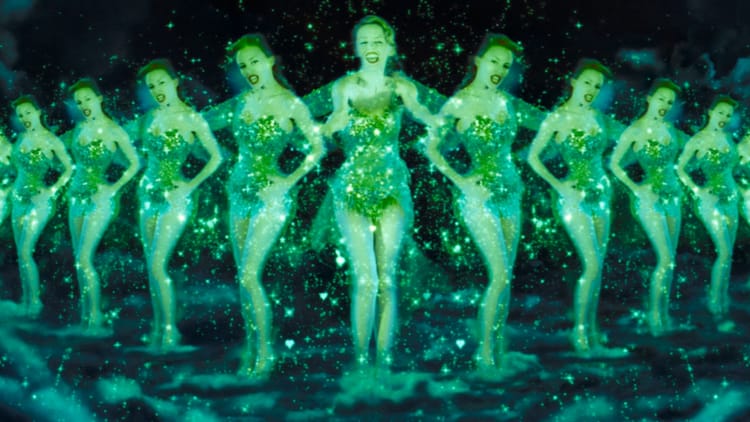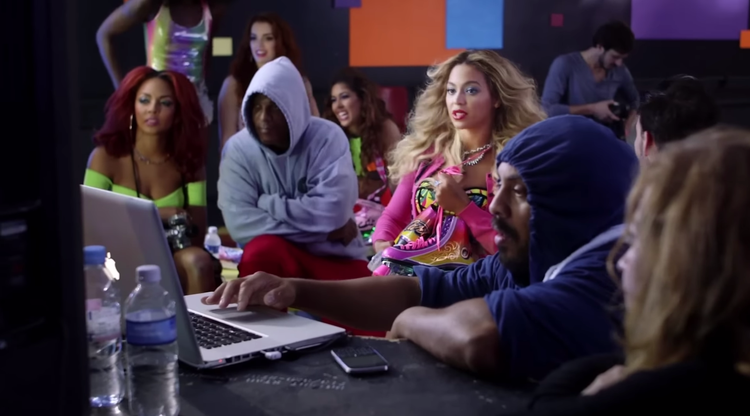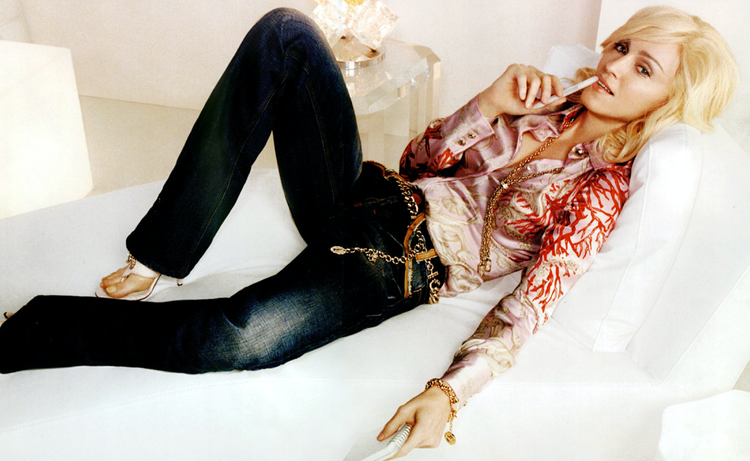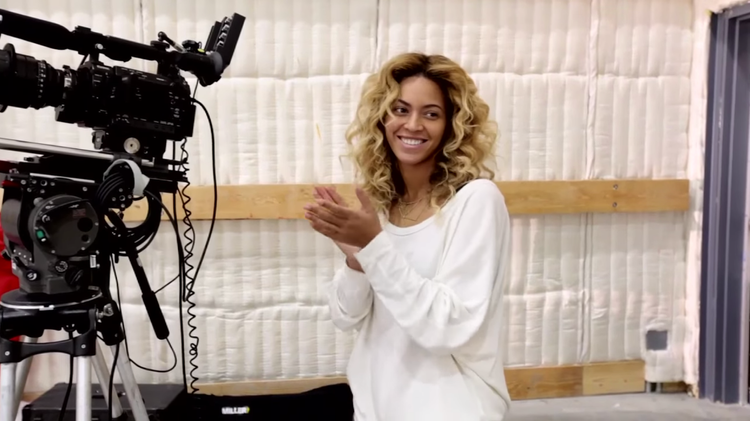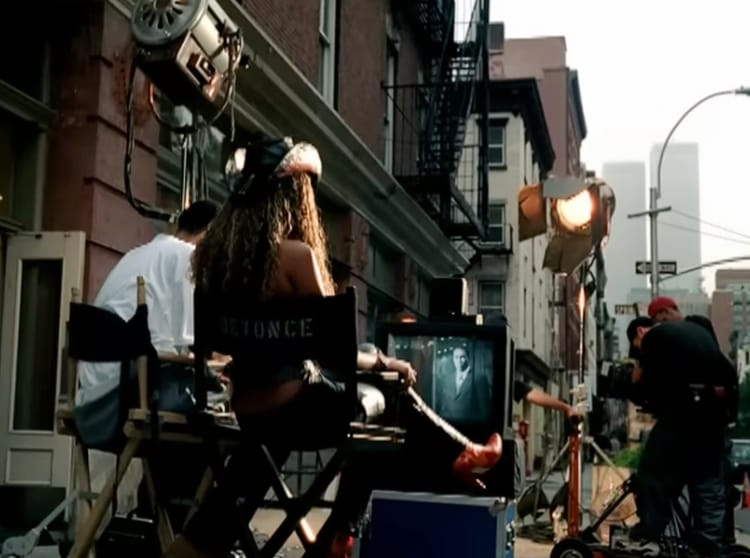When MTV Took Over Times Square
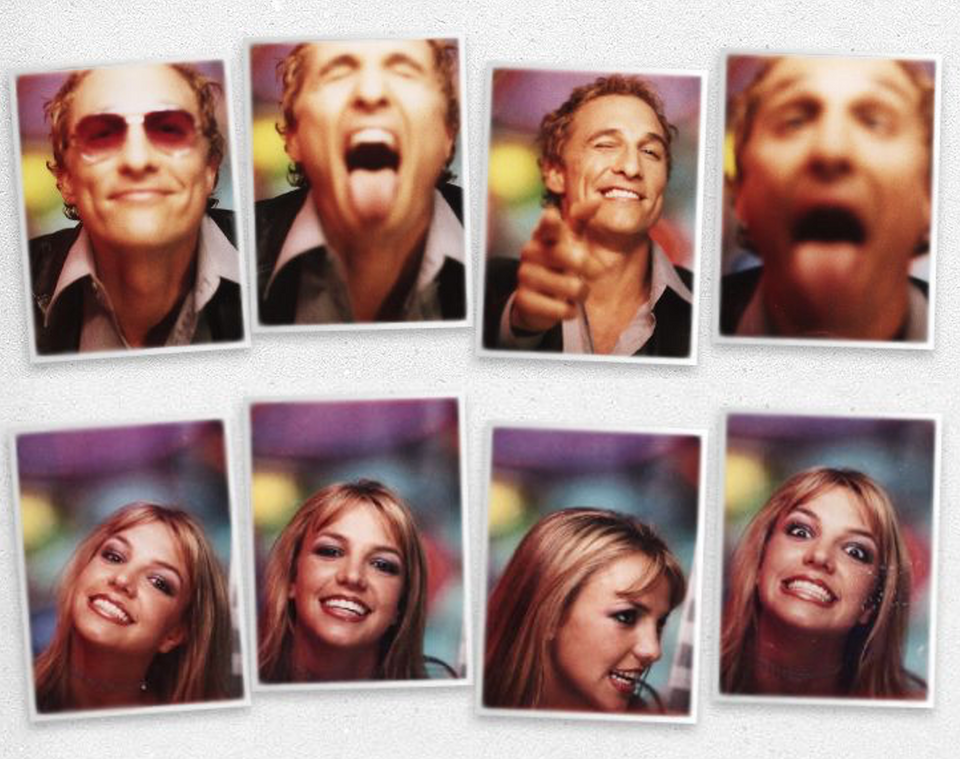
This is the second of a three-part series tied to the 40th anniversary of MTV’s launch, in which I use things from the archives to delve into various chapters in the network’s history. Last time, we talked about the very early, sometimes awkward days of the channel. Here, we look at the heyday of the TRL era.
I recently ordered what I suppose is technically a rare book: an out-of-print collection of photographs called MTV Photobooth (2002). I imagine that it was originally envisioned as a coffee table book, but it’s sort of a flawed one because it’s only about the size of an e-reader, and—more awkwardly—makes weird noises when you turn the pages, old library book-style. (I bought it used, in case that was unclear.) Anyway, its introduction begins as follows:
Dave Navarro, guitarist from Jane’s Addiction, has a photobooth in his living room that he uses to document everyone who comes to his house. We thought this was a great idea. In the summer of 1999, we were looking for a way to capture the amazing environment that is the MTV Times Square Studio, where, on a given day, you’ll have a pop star, a rap star, a movie star and an athlete mingling in the green rooms, and we thought a photobooth would be the perfect way to track the life of the studio. We also wanted to do something fun with the guests while they are hanging around and there’s something about sitting in that confined space for thirty seconds or so that just seems to bring out a lot of humor and playful ideas, as you’ll see in the coming pages.
The book contains highlights from the MTV photobooth taken between 1999 and 2002. (You’ll see people refer to it online as the TRL photobooth, but I’m going to stick to the book’s own lingo here—especially because some of the stars who used it were in the building to be on a different MTV program.) While there was obviously already a whole book’s worth of photos by 2002, this particular iteration of the photobooth seems to have stayed in use until around the time of the TRL finale in 2008. (The show has been rebooted a couple of times since then, but you can assume for the rest of this piece that I’m always talking about TRL in its 1998-2008 period.) In other words, there are lots of notable users missing from its pages; there’s no Beyoncé or even Destiny’s child, for example—I'm not sure why, since Destiny's Child was on the show multiple times during this period—and there’s no Taylor Swift, who wouldn’t appear on TRL until the end of the 2000s. (She did, however, sneak into the studio with her friends when she was 14, as she recalled on Myspace several years later.)
If you’re coming from my last newsletter, you’ll have noticed that we’ve jumped quite a bit of time here—not because there isn’t anything interesting to say about the late ‘80s through the late ‘90s, but because I’m only giving myself three instalments for this series; we’re actually going to jump yet another decade for the final one. But to give you an abridged history of that period: we talked a bit last time about how The Real World, which debuted in 1992, is considered by many to have marked the end of MTV’s Golden Era.
To back up even further, however, MTV had started in the early ‘80s as a low-budget operation with a necessarily do-it-yourself ethos. “It had the feeling of like a college dorm,” summarizes Judy McGrath, one of MTV’s original executives, in the I Want My MTV documentary from last time. But the channel was forced to become more and more corporate in its approach as it got bigger throughout the decade. “We felt the pressure of professionalism start to creep in,” says VJ Alan Hunter in the film of this time. Viacom eventually bought a struggling Warner Communications, which owned MTV, in 1985. Several of the channel’s original VJs were fired, or quit because their colleagues had been fired. Others left simply because the company culture/overall vibe had changed.
There are several sub-chapters I’m having to truncate or completely skip over here. There was Live Aid in 1985, to which MTV devoted 16 hours. There was the channel's initial resistance to, and eventual embrace of, hip-hop in the late ‘80s. There was the sometimes demoralizing, mostly metal-spearheaded boom of videos with “women in cages, and across the hood of a car, and writhing in a wrestling ring,” as McGrath puts it in the film. And, as ratings started to dwindle around the same time, the channel experimented with genre-specific music video blocks—120 Minutes, Yo! MTV Raps, Headbangers Ball, and so on—and even non-musical programming, like the game show Remote Control and the fashion news show House of Style. By the mid ‘90s, MTV was a global network with some sort of presence—not to mention a slew of Viacom-owned sister channels and networks—all over the world.
And though there are pockets of people who resent this fact, it was The Real World—and other ‘90s productions that came out of what’s now called MTV Entertainment Studios—that saved that network’s ratings. This is the decade that brought us, among other things: Daria, Beavis and Butt-Head, South Park, Election (1999), Varsity Blues (1999), and Behind the Music. (Later, we’d get things like Jackass, Pimp My Ride, Crossroads [2002], Punk’d, My Super Sweet 16, and Teen Mom.) MTV had always been about youth culture, but it evolved constantly throughout the ‘90s to reflect that music is just one component of youth culture. TRL, which premiered in 1998, came out of this same moment.
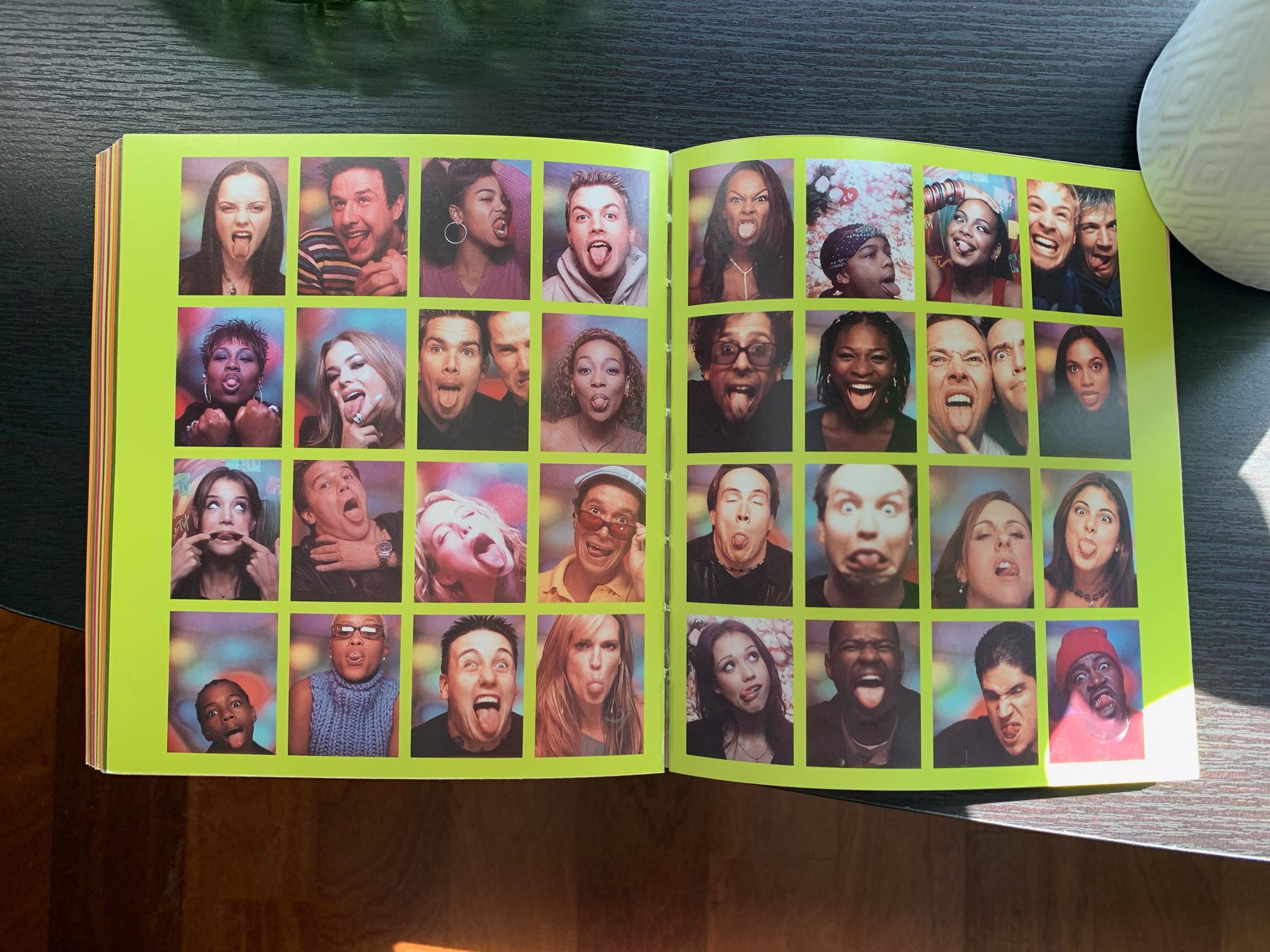
In 1997, having reached a sort of corporate peak, MTV relocated its New York office to Times Square, where the view out of every window was billboards, billboards, and more billboards. This was the setting for two brand new shows, Total Request and MTV Live, which were merged the following year to create Total Request Live (aka TRL). (It was effectively a rebooted and reworked version of Dial MTV, which ran from 1986 to 1991.) Now that the bulk of MTV's programming was no longer reserved for music videos, TRL was a way for the network to still profess to care about them. My favourite description of the show is Mickey Rapkin’s from this Billboard oral history, which you should read in full for all the bonkers anecdotes: “an American Bandstand for a new generation, hosted by a neo-Dick Clark in black nail polish named Carson Daly.”
MTV’s main audience now had the internet at its disposal, which made for a different ballgame—and, ultimately, would start to hurt ratings again as videos started to appear online before TRL could premiere them, and later as things like YouTube showed up. But until that happened, the top 10 videos of the day, as voted by fans via phone and online, would play during each TRL broadcast. In 1999, the show was given a live studio audience, plus hundreds to thousands of screaming fans stationed outside of the studio during every episode. There would also obviously be special guests, mostly musicians who—and this part’s important—wouldn’t necessarily have gotten a video into the top 10 that day, which isn’t the same as not having a video to promote. This could make for friction and/or awkwardness, but only the kind that live television producers salivate over.
While music videos as we know them had originally come out of the desire to not have to travel for every single televised performance—something that was tiring and often expensive, especially if you were, for example, an Australian artist wanting to reach your American fans—MTV circa-TRL had made it so that artists not only still had to make great videos, but also physically show up to be interviewed about them by a VJ. It was a crucial branding and marketing opportunity that you couldn't really opt out of; you were literally there in a room with your target demographic, who in turn got to be in a room with you. (Practically every write-up of TRL uses the example of Eminem, who openly hated being on the show but recognized that he didn't have much of a choice.)
The average viewer was now also perhaps closer in age to the average charting artist than had been true in 1981, since this was the era dominated by boy bands and Britney (largely, in a sort of feedback loop, because their fans were requesting their videos on TRL). Things like gratitude, humbleness, and relatability on an artist's part could be conveyed more easily than ever before. (As Hanson’s Taylor Hanson says in the Billboard piece, “Before you could see what an artist had for breakfast from Twitter, TRL was the place you were going to hear about it.”) There were, of course, artists who could not have cared less about such descriptors, as evidenced by this anecdote from VJ Dave Holmes:
We were supposed to do a whole hour based around Prince. He showed up 10 minutes before the show was over, with an entourage including one huge guy who held an empty tub of like, cheeseballs, but with a sign on it that said, "Swear Jar." If you took the Lord's name in vain, you had to put coins in. Carson said to [Prince], “We were expecting you a little earlier, so there’s a lot we have to get through. We don’t have a lot of time.” And Prince said, “I don’t use time.” Carson, to his credit, said, “So what do you use?” Prince paused for a moment and then said, “Truth.”
Let me get something potentially controversial out of the way: though I’ve watched a ton of TRL tapings for personal and professional reasons, I don’t think that I can honestly claim to have ever watched TRL live. And this is less because of my age than it is the fact that I’m from Canada, where our closest equivalent is MuchMusic, and that’s been true since 1984. As of 2000, we also have MTV—without getting into too much detail re: the Canadian television industry, the two currently operate out of the same building here in Toronto—but it was via MuchMusic, and less so MTV, that I watched music videos as a kid, and where we had MuchOnDemand, the closest thing to something like TRL. (Here’s a bizarre clip of VJ Leah Miller interviewing M.I.A. in the late '00s while then-boyfriend Diplo awkwardly waves from the street.) MTV, conversely, is where I’d go to watch stuff like The Hills and Jersey Shore in middle/high school, and where my friends and I would line up for hours in person to get into MTV Live, a now-defunct show that was hosted by—among others—Dan Levy.
But I watched several hours combined of TRL this week while writing this, choosing clips at random on YouTube from the same period covered in MTV Photobooth. In 2000, the main MTV channel was still playing up to eight hours of music videos every day—a significant decline from before then, sure, but pretty remarkable compared to today's 24-hour Ridiculousness marathons. For copyright reasons, videos tend to be missing from online TRL tapings, but I still got to hear them introduced and debriefed. In terms of the other stuff, Jennifer Love Hewitt tried to sell me Neutrogena body wash. I watched a trailer for 10 Things I Hate About You (1999). Britney Spears showed Holmes her new belly button piercing in 2000, and Holmes asked her to expose her midriff a second time so that they could get a better shot of it. At another point in the same episode, she’s asked whether Prince William is her Valentine (no). I also happened to click on a taping from August 27, 2001—two days after Aaliyah died, and exactly 20 years ago today. Timbaland calls in to the studio sounding like absolute shit, and a newly rebranded “P. Diddy” guest hosts some of the episode. As you can guess, things would get even gloomier on TRL a couple weeks later.
Lots of the celebrities memorialized in MTV Photobooth are still very much famous, but the book is an interesting time capsule for why and how they were famous then. This is the Gwen Stefani of No Doubt, not the Gwen Stefani who'd travel around with decorative Japanese women just a few years later. This is Matthew McConaughey the budding rom-com heartthrob, not Matthew McConaughey the… whatever you’d call him now. We get the Black Eyed Peas before Fergie had actually joined the group; we get former US Attorney General Janet Reno, because why the hell not.
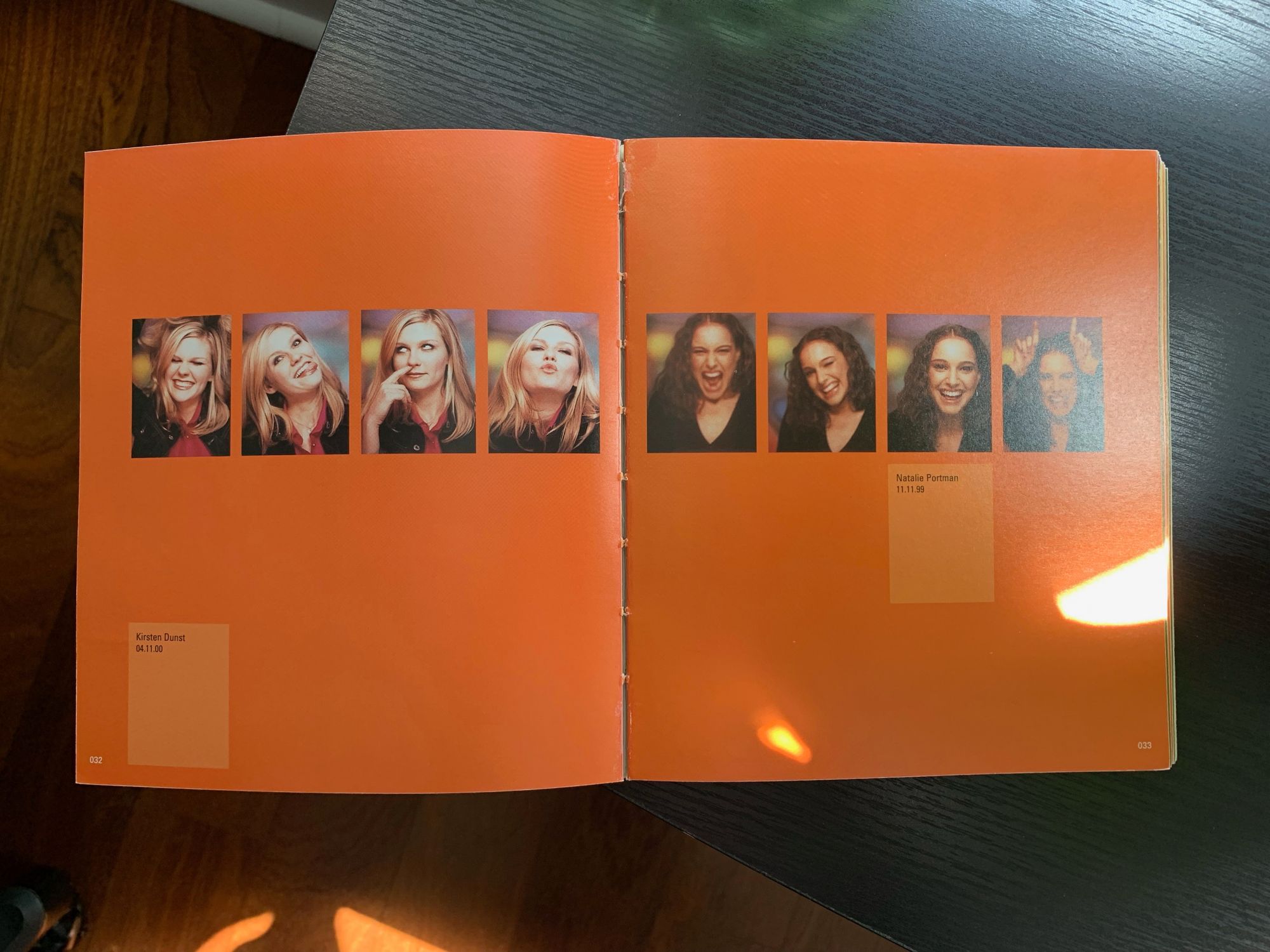
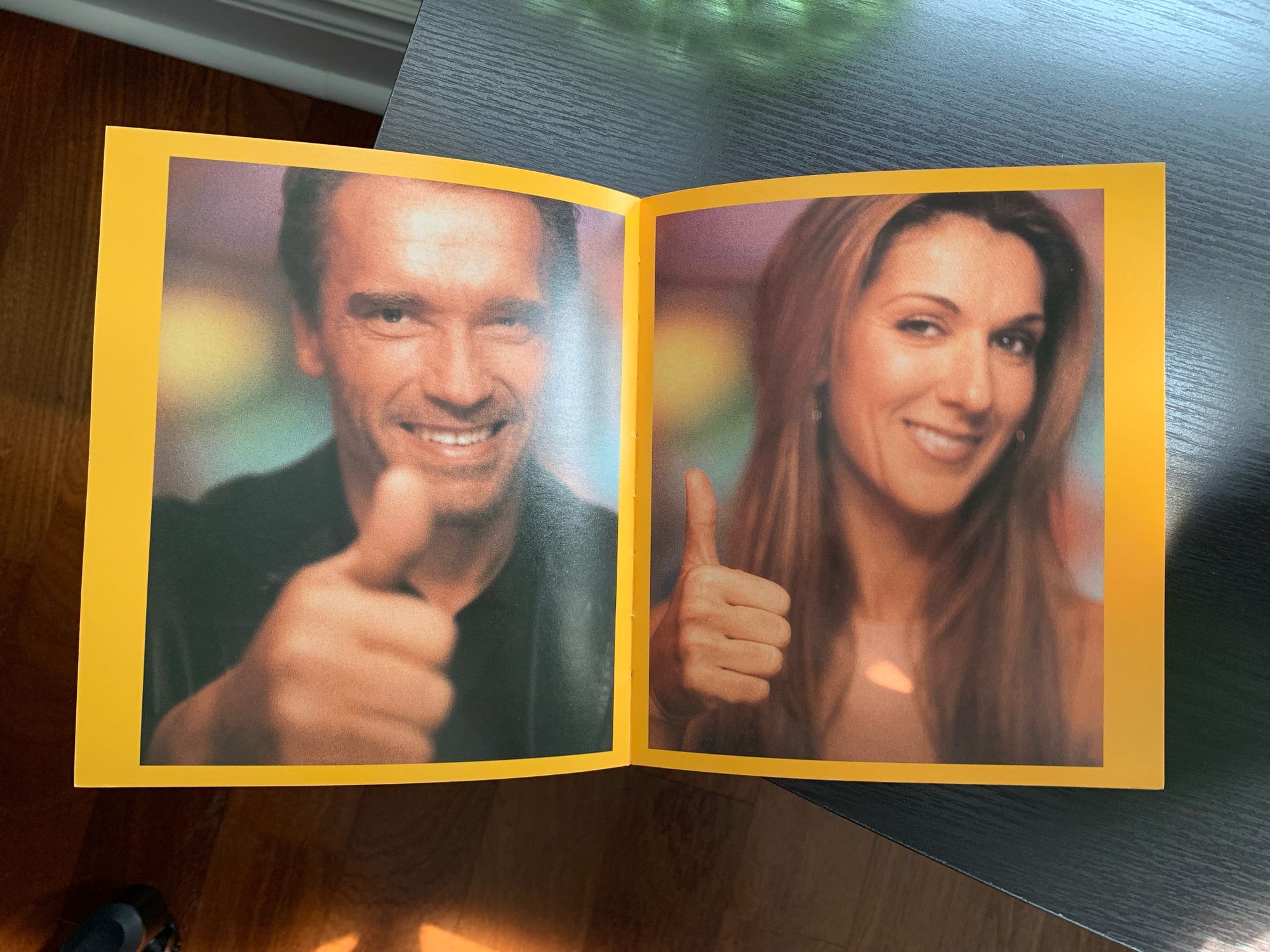
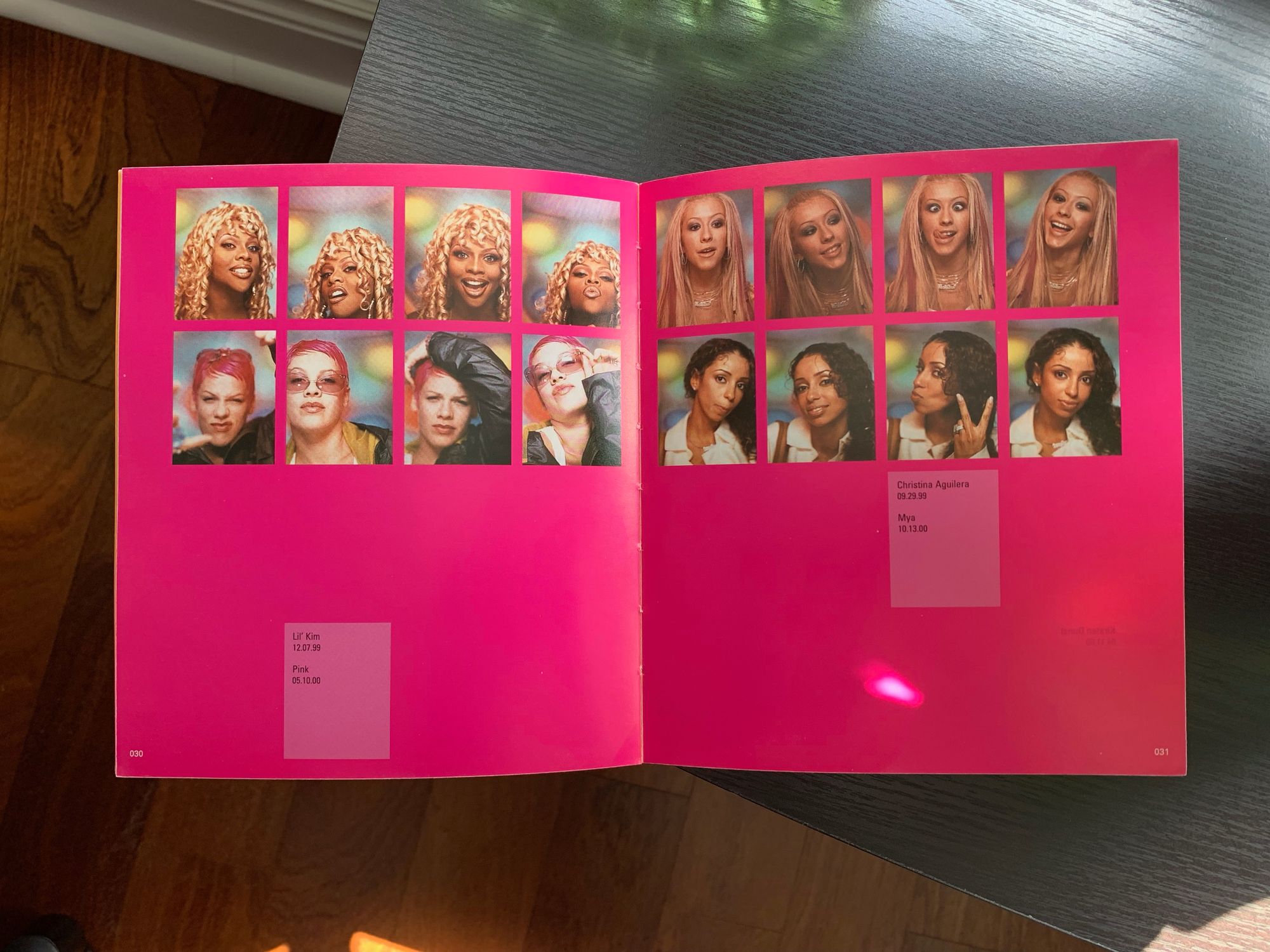
The book is also interesting for the way that things have been curated: discrete photobooth sessions have been grouped together based on music genres (e.g. Ja Rule and Jay-Z both being rappers), professions (e.g. Adam Sandler and Chris Rock both being comedians), real-life relationships (e.g. Tim Burton and Christina Ricci having made Sleepy Hollow [1999] together around the same time), and even poses (e.g. Arnold Schwarzenegger and Céline Dion both giving the camera a thumbs-up). The “Lady Marmalade” (2001) women (Ladies Marmalade?) appear together on a two-page spread even though they'd visited the building separately, and scattered over the preceding two years. Same goes for the cast of American Pie (2001), and also Josie and the Pussycats (2001), though the latter also made a TRL appearance as a trio. (This last example is particularly funny given how Josie skewers this exact era of MTV, taking shots at the network using its real-life VJs and programming, and with the network itself seemingly happy to be in on the joke that it was evil and in the business of mind control.)
It's pretty fascinating to compare MTV's 40th anniversary celebrations back on August 1 (which, again, were practically non-existent) to its 20th anniversary ones in 2001. The network began by devoting 12 hours to playing 100 key MTV videos in succession, then had Carson Daly host the star-studded MTV20: Live and Almost Legal, which Digital Spy hyped up before the fact as "one of the most glittering, unmissable events of the year." In the weeks on either side of the actual anniversary, there were also multiple prepared MTV20 specials that delved into the history of specific genres on the channel (here's the pop one; here's the rock one). In hindsight, the TRL heyday seems to have been one of the last times that the network seemed to think of itself as something worth celebrating. Next time around, I'll take a stab at whether the rest of us should agree. ●
Mononym Mythology is a newsletter about mostly pop divas and their (visual) antics. It’s totally free, but if you got something out of this instalment, consider buying me a coffee. The best way to support my work otherwise is by sharing it. You can subscribe here, and you can find me on Twitter and Instagram.
